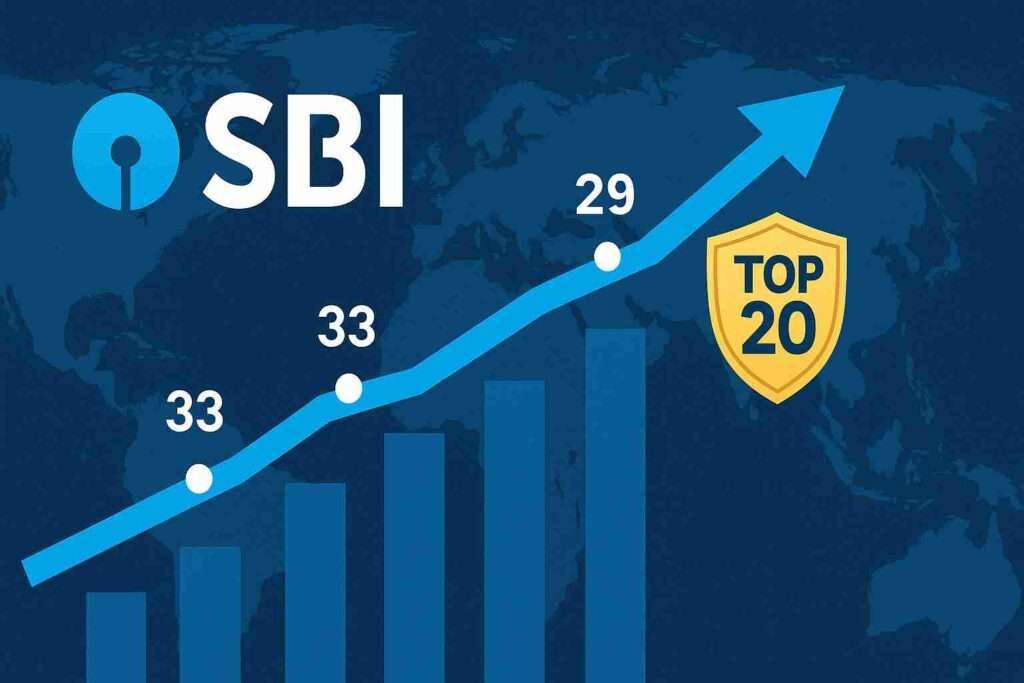State Bank of India has once again become the centre of India’s banking conversation. Most experts say 2025 is the SBI year. Chairman C.S. Setty’s calm remark that “another round of rationalisation may not be a bad idea” is not just a comment — it is an indication that India is preparing for another chapter in PSU bank merger.
But, unlike the 2020 environment, when the banking sector was dealing with stress and shrinking valuations, SBI in 2025 is operating from a position of strength. The numbers alone explain why the tone has changed.
A Stronger SBI Than Ever Before
- As per companiesmarketcap.com data, back in 2020, SBI’s market cap was near $33 billion.
- In November 2025, it stands close to $101 billion and position 29 — almost 3X in just five years.
- If we cover more depth, from 2006 to 2020, the Bank market cap count between 14 billion to 33 billion USD.
But SBI’s deeper strength lies beyond the stock price. Today, it operates at a scale that very few global banks can match, especially in customer reach and balance-sheet depth.
SBI’s Current Scale Snapshot (Nov 2025)
| Category | SBI (Nov 2025) | Why This Matters |
|---|---|---|
| Market Cap | ~$100B | Strong re-rating since 2020; still below Top-20 global valuation levels. |
| Total Assets | ₹73–77 trillion (~$0.9T) | Close to global Top-20 asset size; mergers push it comfortably inside. |
| Customers | 50+ crore | Among the largest retail customer bases worldwide. |
| Branches | 22,000+ | One of the world’s biggest physical networks. |
| Deposits | ₹50+ trillion | Deep capital base supporting large credit expansion. |
On asset size, SBI is already consistently ranked within the top 50, typically around the 43rd to 45th position.
A merger would not create scale — it would enlarge what is already one of the world’s biggest banking platforms.
Why Consolidation Makes Sense Now
Earlier PSU mergers were designed to stabilise weak banks.
The 2025–26 discussions are different. India is now aiming for global scale, across multiple metrics:
- Total assets
- Deposits
- Lending capacity
- Customer reach
- Digital transaction volumes
SBI naturally becomes the anchor for this ambition because it already leads the pack on each of these parameters.
How SBI’s Scale Fits With Other PSBs
To understand which mergers may be possible based on data (not predictions), we look at:
- Relative asset size
- Deposit base
- Existing technology stack
- Past consolidation patterns
- Operational compatibility
Based on these measurable factors, here’s what the data suggests:
Data-Based Compatibility Snapshot (Not Predictions)
| PSU Bank | Total Assets (Approx.) | Why Pairing With SBI Is Structurally Possible (Data Only) |
|---|---|---|
| Bank of Baroda (BoB) | ₹18 trillion | Second-largest PSB; similar tech maturity; combined assets would cross ~$1T+. |
| Punjab National Bank (PNB) | ₹17–19 trillion | Large customer base; branch-heavy; adds scale quickly when combined. |
| Canara Bank | ₹16–17 trillion | Strong south belt presence; similar CASA ratios; reduces regional duplication. |
| Union Bank of India | ₹14–15 trillion | Already merged (Andhra Bank and Corporation Bank) in the last cycle; compatible IT and operations structure. |
| Indian Bank | ₹7–9 trillion | Mid-sized but clean balance sheet; easier integration path. |
These banks appear alongside SBI in the top tier of PSBs by assets, deposits, and branch distribution.
This does not mean a merger will happen — it only indicates which banks match SBI’s scale structurally, if policymakers aim to build a Top-20 global banking firm by assets.
How Scale Changes With These Banks
This is where the numbers speak clearly:
- SBI alone: ~$790 billion USD or ₹66.76 trillion INR (as of 2025)
- SBI + any one of the top PSBs above: $1.0–1.2 trillion assets
- SBI + two PSBs: $1.3–1.5 trillion assets
At that point, India would have an entity sitting comfortably among the world’s Top-10 to Top-15 banks by assets.
Again — this is not a prediction.
This is just arithmetic based on existing balance sheets.
Why This Matters for 2026 and Beyond
If India plans to undertake large-scale infrastructure spending, manufacturing expansion, and achieve good financial inclusion for all, it needs big banks that can handle trillion-dollar balance sheets. SBI is already closed and position in the top 30 by market cap only. Adding compatible PSBs only strengthens that position.
The merger conversation now is grounded in numbers, not rescue missions.
The data clearly shows that India has sufficiently large government banks to create a global-scale entity — if and when policymakers decide to do so.
Last data – India May Soon Have Only 4 Big Government Banks — RBI and Finance Minister 2026 Plan Explained







